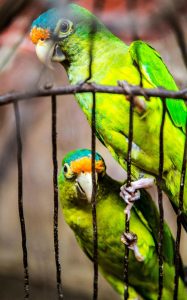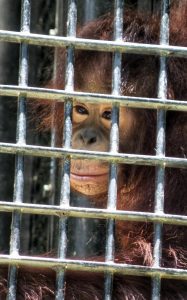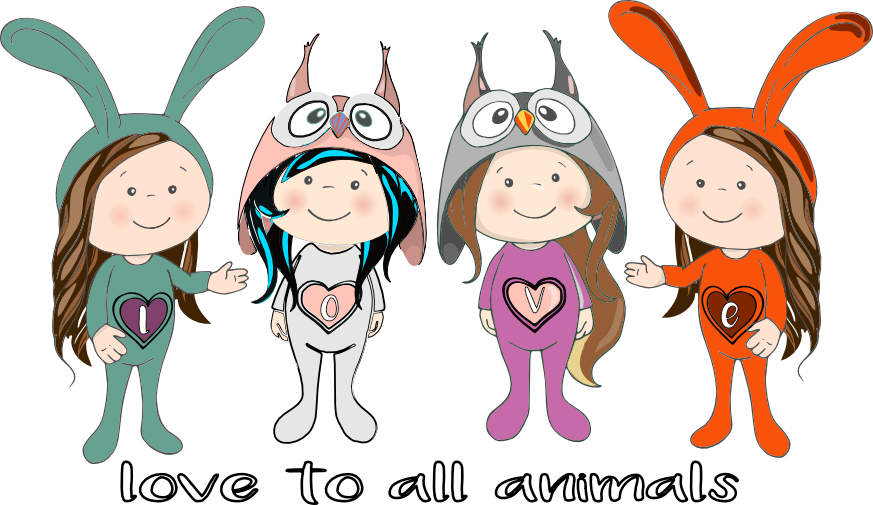At the moment we live with a constant sense of uncertainty. Violence comes out to surface in different ways. Violence is an intentional act that may happen once, daily or systematically in order to control, dominate or hurt others.
Cruelty towards animals

Violence acts can hurt a person’s development and it adopts different forms of expressions that may vary from verbal abuse up to homicide. Most of the time, violent acts are carried out by those with more “power” against others but it is also performed against animals. Every day we witness a series of shocking events; one of them being, violence against animals.
If we think about it, violence against animals is a factor that influences social violence and a consequence of social violence itself.
It is part of a domino effect that at some point or another reaches us as individuals and a society.
Cruelty towards animals, also called animal abuse or animal neglect, is the human infliction of suffering or harm upon other living creatures (not humans) for purposes other than self-defense or survival.
It is extremely important to note that cruelty to animals sometimes encompasses inflicting harm or suffering for personal amusement, as in zoosadism.
Just to be clear, zoosadism is the pleasure a person may experience from inflicting pain towards an animal.
The laws
In order to combat this disgusting activity there are several laws; they are designed to prevent needless cruelty.
Different approaches to such laws occur in different jurisdictions throughout the world.

For example, some laws govern methods of killing animals for food, clothing, or other products, and other laws concern the keeping of animals for entertainment, education, research, or as pets.
In broad terms, there are three conceptual approaches to the issue of cruelty to animals. They are animal welfare, utilitarian, and animal rights.
The animal welfare argues that there is nothing inherently wrong with using animals for human purposes, such as food, clothing, entertainment, and research, among other activities. They argue that this must be done in a way that minimizes unnecessary pain and suffering, sometimes referred to as “humane” treatment.
Utilitarian advocates argue from the position of costs and benefits and vary in their conclusions as to the allowable treatment of animals.
Last but not least, animal rights theorists criticise these positions, arguing that the words “unnecessary” and “humane” are subject to differing interpretations, and that animals have basic rights.
Links with violent crime
There are many reasons why individuals abuse animals. Animal cruelty covers a wide range of actions (or lack of action). Learning about animal abuse has revealed patterns of behavior employed by abusers.
The links between cruelty to animals and violent and aggressive crime have been documented for decades. This has been a subject that has been studied for a long time. Researchers have uncovered evidence of the psychological effect on children of witnessing cruelty to animals, and prompted widespread efforts to step in and stop those at risk.
Tens of thousands of dogs live on the streets in Romania, and the strays, are routinely rounded up and killed under a government “law of slaughter” to control their numbers.
Culturally, the attitude that domestic violence is normal has been shown to be prevalent in the country. In a 2010 Eurobarometer poll on violence against women, 36 per cent of Romanians said they thought domestic violence in their country was very common and 58 per cent agreed that “provocative behaviour” was a cause of violence against women.

Researchers from Teesside University decided to investigate this problem. There were two groups: teenagers in Romania and teens in Germany (control group).
Most of the teens asked, had witnessed street animals being caught in a noose, poisoned or hanged. When they spoke to teenagers in Romania, they found out that nine out of 10 thought it was “normal” to see homeless animals being abused or killed. The teens in Romania were also found to be more likely than the German teens, to self-harm or have suicidal tendencies.
As if the situation in Romania was not enough to scare you to death, there are several well known cases of animal abuse and horrific killers.
Jeffrey Dahmer, the “Milwaukee cannibal” who dismembered 17 people had first practised his butchery by cutting up dogs and cats and impaling their heads on sticks. Ian Brady, the Moors murderer tortured and killed five children (Pauline Reade, John Kilbride, Keith Bennett, Lesley Ann Downey and Edward Evans—aged between 10 and 17) between July 1963 and October 1965. He boasted of killing his first cat when he was just 10, and went on to burn another cat alive, stone dogs and cut off rabbits’ heads before going on to target people.
Furthermore, researchers Stephan Kellert and Alan Felthous studied in an extensive manner the animal abuse phenomenon. This research took place in 1985 and data was derived from personal interviews with 152 criminals and noncriminals in Kansas and Connecticut. They discovered several motivations. some of them are:
1. To enhance one’s own aggressiveness. To shock people for amusement.
2. Controlling an animal through inflicting pain as a result of the sense of loss of full control in one’s own life. (Physically abused by parents.)
3. Retaliation against a person by hurting their pet.
4. To experience sadism (the suffering experienced by the animal).
Kellert and Felhous concluded that family violence, particularly alcoholism and paternal abuse, were more common amongst aggressive criminals with a history of childhood cruelty towards animals.
The Macdonald Triad
Cruelty to animals is one of the three components of the Macdonald triad. This refers to a set of three factors that has been suggested if any combination of two or more are present together, to be predictive of, or associated with, a later violent tendencies, particularly with relation to serial offenses indicators of violent antisocial behavior in children and adolescents.
According to the studies used to form this model, cruelty to animals is a common (but not universal) behavior in children and adolescents who grow up to become serial killers and other violent criminals. It has also been found that children who are cruel to animals have often witnessed or been victims of abuse themselves.
Breaking it down
Animal cruelty is often broken down into two main categories: active and passive, also referred to as commission and omission, respectively.
Passive cruelty is typified by cases of neglect, in which the cruelty is a lack of action rather than the action itself.
Examples of neglect are starvation, dehydration, parasite infestations, allowing a collar to grow into an animal’s skin, inadequate shelter in extreme weather conditions, and failure to seek veterinary care when necessary.
Active cruelty refers to inflicted violence. It is a deliberate intent to harm an animal creating immediate pain and suffering. This is a crime of acting with “malicious intent.” Intentional animal abuse is often a sign of serious psychological issues or sociopathic behavior.
This type of animal cruelty may also take place in violent homes, as a way for the aggressor to intimidate or psychologically torture family members.
A perfect example of active cruelty is flushing a live aquarium fish down a toilet.
Violence around the world
The UK has emerged as the country which conducts the highest number of animal experiments in Europe (2,574,875 in 2017), replacing Germany as the biggest reported user of animals for research in the EU. Germany remains the second highest user completing 2,068, 813 experiments in 2017 while France was third with 1,914,174 tests that year.

Between 2015 and 2017, the total number of experiments on animals in European laboratories decreased by 2% from 9.78 million in 2015 to 9.58 million in 2017. However, there was an increase to 10.03 million in 2016.
Between 100,000 and 200,000 pets are abandoned in France each year, with 60% of these incidents occurring over the summer.
In some ancient cultures, animals are often sacrificed or killed.
In Santeria, they continue to do animal sacrifices for healing and other rituals. Taghairm was performed by ancient Scots to summon devils.
In 2009, Bolivia passed legislation banning the use of any animals, wild or domestic, in circuses. The law states that circuses “constitute an act of cruelty.” Circus operators had one year from the bill’s passage on July 1, 2009 to comply.
In 2010, Lebanese animal rights groups became enraged when it was learned that wild performing animals belonging to the Monte Carlo Circus were transported from Egypt to Lebanon without being provided with food and water.
Conclusions
It is paramount that we educate ourselves and those around us about this issue. Helping people to understand that they can intervene in situations where animals are being neglected or even tormented. Animals have a right to live without fear or pain, and we have a responsibility to step in if their rights aren’t respected.
The truth is that animals need our help. They can’t end animal cruelty on their own, so we have to step in, all of us.

If someone witnesses animal abuse they should report it. maybe, confronting the abuser is dangerous but that should not mean that you should turn away from it.
The shocking number of animal cruelty cases reported every day is just the tip of the iceberg—most cases are never reported.
Animal cruelty is real and pervasive. People see animals as “less valuable” than humans, these atrocities continue to happen over and over. It happens to all different types of animals and in every corner of the world. It’s also preventable and unnecessary. Animals are amazing creatures who deserve our respect and protection. Don’t just read this article, please share it.


